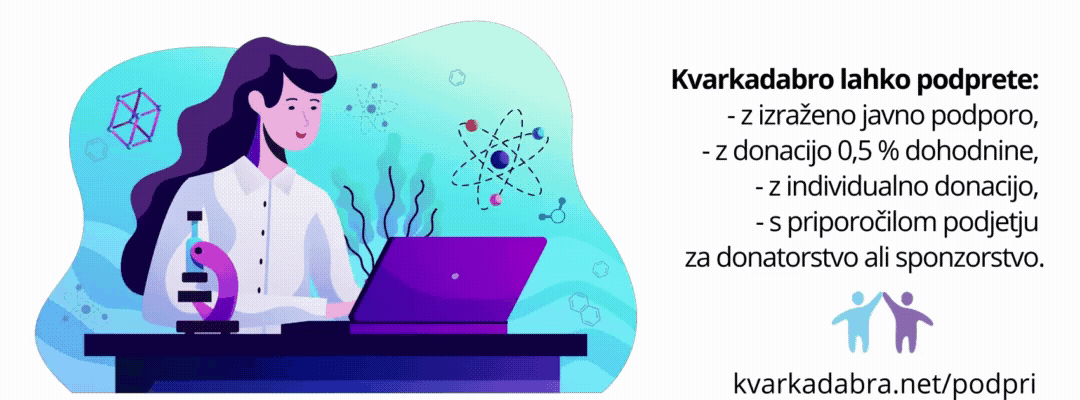Opozoril bi na zelo zanimivo raziskavo, ki jo je pred nekaj meseci za potrebe “lobiranja” na ravni EU pripravilo Ministrstvo za znanost v sodelovanju s prof. Anuško Ferligoj (soavtorji so še: Luka Kronegger, Andreja Venturini in Jana Kolar). Gre za kompleksno statistično analizo z naslovom PARTICIPATION IN THE EU FP – POLICY IMPLICATIONS (pdf), ki je bila menda ob predstavitvi v Bruslju deležna mnogih pohval in bo menda vplivala tudi na pripravo nove sheme razpisov – vsaj tako nam je povedal minister Lukšič ob njeni predstavitvi na zadnji seji SZT.
Bistvo raziskave je bilo pokazati, da so podporne analize, ki jih na ravni EU uporabljajo za pripravo evropskih raziskovalnih projektov, slabe oziroma neverodostojne, saj vidijo korelacije tam, kjer jih dejansko ni. V slovenski raziskavi so naredili večdimenzionalno analizo množice parametrov, ki bi lahko vplivali na uspešnost črpanja evropskega raziskovalnega denarja. Vsekakor si velja pogledati grafe in natančno poročilo o analizi, ki ga nadete na linku zgoraj, tule bom povzel le nekaj pomembnejših rezultatov, ki so zanimivi tudi za širšo javnost.
V analizi se je med drugim izkazalo, da je količina pridobljenega EU denarja sorazmerna s količino vloženega domačega denarja v raziskave, kar z drugimi besedami pomeni, da se državi vlaganje v znanost splača tudi zato, ker se vloženi denar v naslednjih letih povrne iz skupne vreče EU. Prav tako so iz razpoložljivih podatkov ugotovili, da sta največji napredek v zadnjih letih dosegli Estonija in Portugalska, od katerih bi se veljalo učiti. Obe sta veliko vlagali v znanost in vsaj Estonija je odprla tudi zelo uspešno agencijo, ki raziskovalcem vsestransko pomaga pri prijavah na razpise in jim nasploh nudi vso podporo. Menda nekaj podobnega že pripravljajo tudi pri nas.
Abstract The study aims to offer some insight into the performance patterns of Member States in the Framework Programme (FP) using advanced statistics. It also evaluates some key factors which affect participation rate in FP.
…
Member States can be grouped into four clusters. FR, DE, IT, ES, UK have the highest average on
financial contributions per project as well as percentage of coordinators in FP7, but have the
lowest number of projects per GDP and per capita. On the contrary, CY, EE, MT, SI have the
highest number of projects per GDP and per capita, but the lowest average on financial
contributions per project. They have also the highest financial contribution per GDP. AT, BE, DK,
FI, GR, IE, NL, SE are performing well in all indicators, while BG, CZ, HU, LV, LT, LU, PL, PT, RO,
SK have low averages on all performance indicators used in the study.
Comparison of performance in FP6 to FP7 reveals that in FP7, the differences between the
countries in the latter, least successful cluster and the other clusters of countries have generally
intensified. … It is evident that the year of
accession to EU (“learning effect”) has no effect on FP indicators. However, the RD expenditure,
which highly correlates with RD&I excellence, as well as the population in member state account
for 92% of the variability between Member States in their financial contributions per retained
project.
…
A number of policy recommendations can be drawn based on the results. …Firstly, performance of member states in FP is strongly related to the investment in RD in a country. In order to improve their participation, the countries therefore need to invest more.
Secondly, population of a county matters. In case of big countries this is likely due to the existence of internal networks of actors, which collaborate on national scale, and continue with the partnerships on EU scale. … Of course, little can be done to increase the size of population of a country in order to offer more possibilities for networking on a national level, but it can virtually grow in size by opening its programmes to collaborations across borders and thus contribute to stronger integration of its research community in ERA.
Lastly, measures can be established in Member states, which will stimulate researchers to take leading roles in projects. With this, their visibility, impact as well as financial participation is likely to increase.







